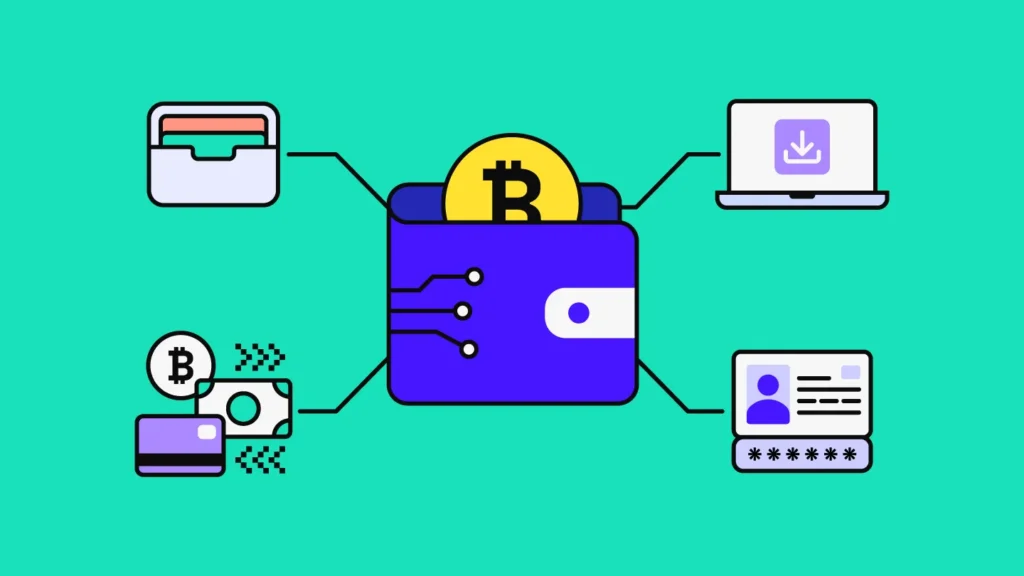
Choose the right cryptocurrency wallet: Explore software, hardware, and paper wallets to securely manage your digital assets.
The cryptocurrency industry has seen incredible growth over the years, and this upward trajectory shows no signs of slowing down. With this surge, more traders and investors are exploring the possibilities in digital assets. But before you dive into trading or investing, you’ll need a crypto wallet. This comprehensive guide explains everything you need to know about creating a crypto wallet, from its importance to choosing the right type for your needs.
What is a Crypto Wallet and Why Do You Need One?
A crypto wallet is a tool that allows users to store and manage their cryptocurrency securely. Whether you’re a seasoned trader or a newcomer, having a reliable wallet is critical to buying, selling, or holding digital assets.
Benefits of Owning a Crypto Wallet:
- Security: Protects your assets with advanced encryption.
- Convenience: Allows you to access your crypto anytime.
- Control: Offers ownership over your private keys.
Types of Crypto Wallets
Understanding the different types of wallets helps you select the one that best suits your needs.
- Hardware Wallets
- Physical devices that store private keys offline.
- Examples: Ledger Nano X, Trezor Model T.
- Software Wallets
- Digital applications for mobile or desktop.
- Examples: Exodus, Trust Wallet.
- Web Wallets
- Accessible through web browsers.
- Examples: Coinbase Wallet, MyEtherWallet.
- Paper Wallets
- Physical printouts of private and public keys stored offline.
Steps to Create a Crypto Wallet
Creating a Software Wallet
- Choose a Trusted Wallet App
Research and select a wallet with robust security features, such as Exodus or Electrum. - Download and Install the App
Always download from the official website or app store to avoid malicious software. - Set Up Your Account
Provide your name, email, and a strong password. Some wallets may require identity verification. - Transfer Crypto to Your Wallet
Use your wallet address or QR code to transfer funds securely.
Creating a Hardware Wallet
- Research and Purchase Hardware
Compare options like Ledger and Trezor for reliability and features. - Install Wallet Software
Follow the setup wizard provided by the manufacturer to install the required software. - Transfer Assets to Your Wallet
Link your wallet to a crypto exchange and move your assets offline for added security.
Creating a Paper Wallet
- Generate Keys Offline
Use an offline computer to create your private and public keys. - Print or Write Down the Keys
Securely print or manually write the keys on paper and store them safely.
Factors to Consider When Choosing a Crypto Wallet
- Security
Look for features like two-factor authentication and multi-signature support. - Supported Cryptocurrencies
Ensure the wallet supports the digital assets you plan to store. - User Experience
A user-friendly interface can simplify managing your assets. - Costs and Fees
Be aware of transaction fees and upfront costs, especially with hardware wallets. - Customer Support
Reliable support can help resolve issues quickly.
Best Crypto Wallets for Your Needs
| Wallet | Type | Key Features | Best For |
|---|---|---|---|
| Exodus | Software | User-friendly, multi-currency | Beginners |
| Ledger Nano X | Hardware | Offline storage, high security | Overall Use |
| Trust Wallet | Software | Free, supports NFTs | Mobile Users |
| Trezor Model T | Hardware | Advanced security features | High Security |
| Coinbase Wallet | Software/Web | Integrated with Coinbase Exchange | Low Costs |
Common Risks and How to Mitigate Them
- Phishing Scams: Avoid suspicious links and always verify the sender.
- Hardware Failures: Keep backup copies of your keys or seed phrases.
- Lost Keys: Use secure storage for private keys or recovery phrases.
Are Crypto Wallets Free?
- Software Wallets: Often free, but may charge small transaction fees.
- Hardware Wallets: Require a one-time purchase, costing $50 to $200.
How to Open a Crypto Wallet Account
To set up a wallet, you’ll typically need:
- Personal information (e.g., name, email, address)
- Understanding of public and private keys
- Cryptocurrency to store
Final Thoughts on Crypto Wallets
Choosing the right crypto wallet is a cornerstone of safe and efficient cryptocurrency management. Whether you prefer a high-security hardware wallet or a flexible software wallet, prioritize your needs and security to make the most of your investment.
FAQs
- What is the safest type of crypto wallet?
Hardware wallets are considered the safest as they store keys offline. - Can I use multiple wallets?
Yes, many users manage assets across various wallets for flexibility. - Are all wallets compatible with every cryptocurrency?
No, always check the supported currencies before choosing a wallet. - How do I recover a lost wallet?
Use the recovery seed phrase provided during setup to restore your wallet. - Is it safe to use web wallets?
Web wallets can be convenient but are less secure than hardware or software wallets.





